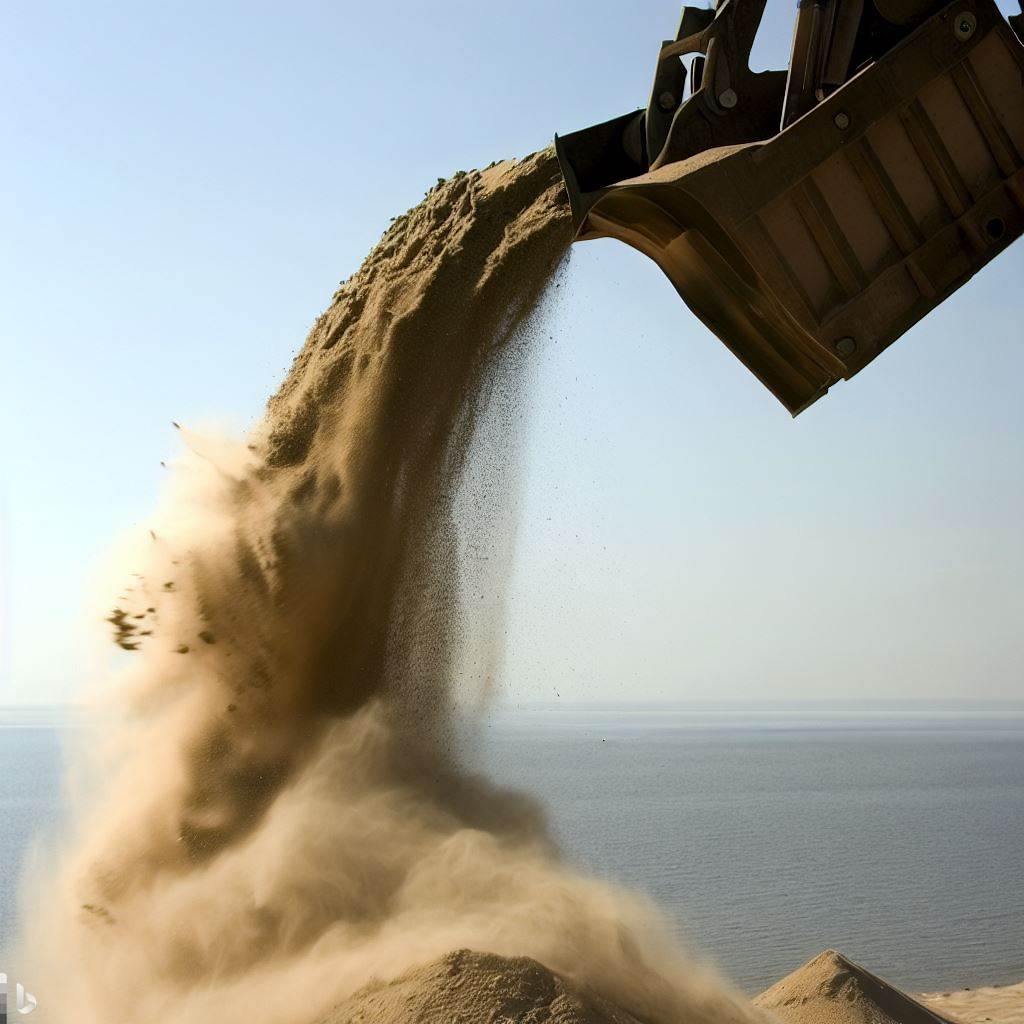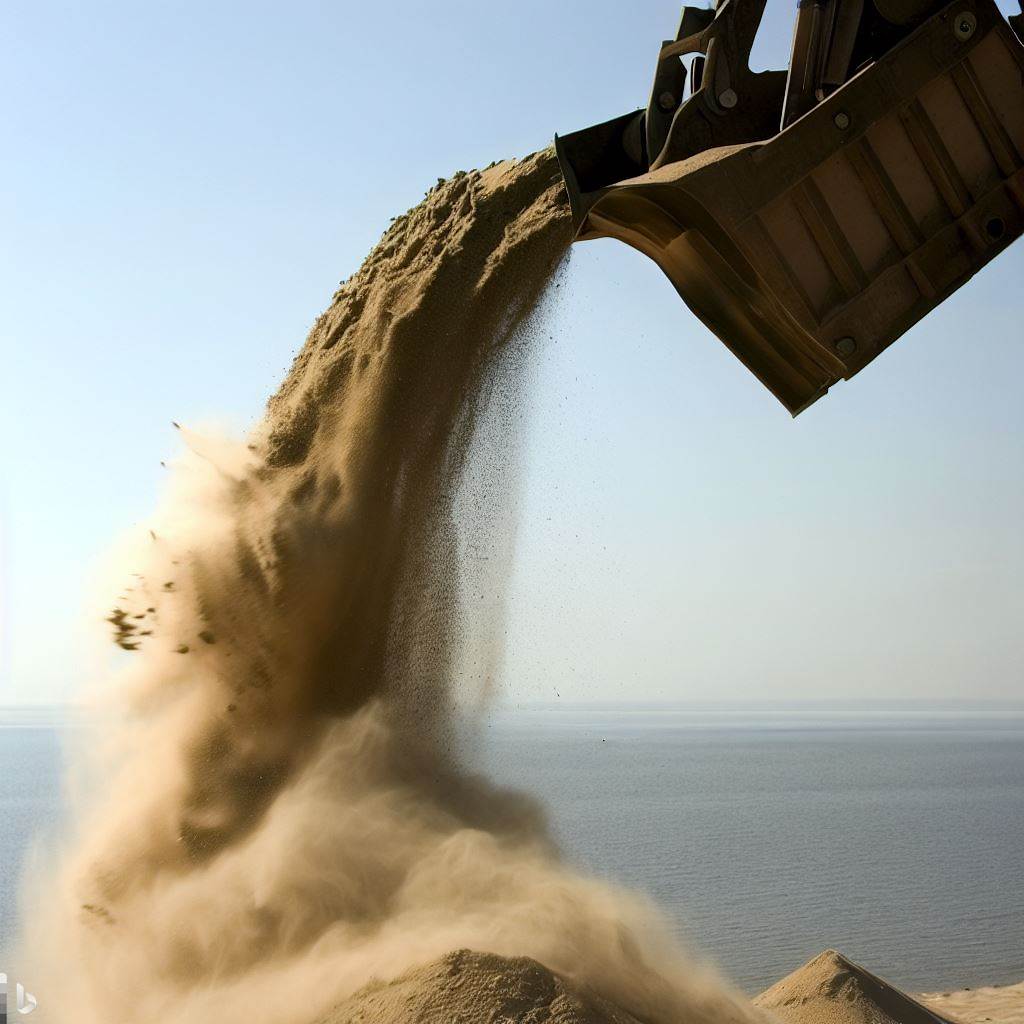Remember how it felt as a child, toes wriggling in the warm beach sand? That sense of joy experienced is exactly what we’re aiming for when it comes to the topic of how to dispose sand – only this time around, we’re sharing it. How so? You might wonder. Well, let’s embark on this granular journey together.
The possibilities awaiting us are truly exciting – everything from DIY projects that will make your neighbor green with envy to unexpected but generous donations which will leave you feeling all sorts of warm and fuzzy inside.
Buckle up because navigating through these pathways won’t be a mundane task! We’ll explore suggestions that are down-to-earth, legally compliant, and environmentally friendly; making sure every single grain finds a new home or purpose.

Identifying Types of Sand for Disposal
When it comes to disposing of sand, it is crucial to understand the different types and their properties. Not all sand is created equal – there are various types such as:
- Construction sand
- Beach sand
- Play sand
Construction sand may contain small particles of cement or other materials, while beach sand can be mixed with shells or organic matter. Play sand often contains fine dust particles that are not ideal for reuse.
By identifying the type of sand you need to dispose of, you can determine the most appropriate method for its disposal.
Properly Storing Sand Prior to Disposal
Before moving forward with disposal methods, it’s important to store the excess or contaminated sand properly.
This will prevent any accidental spread or contamination during transportation and ensure a smoother disposal process. Use sturdy plastic bags or containers that are securely sealed to prevent leaks or spills.
Local Regulations on Sand Disposal
Different regions may have specific regulations regarding the disposal methods for different types of waste materials, including sand.
It is essential to research and comply with your local regulations before deciding on a disposal method. Some areas may require special permits or provide designated locations where you can dispose of certain types of sand safely.
Reusable Options for Excess Sand
If your excess or contaminated sand is still in good condition and suitable for reuse, consider exploring some reusable options before resorting to disposal methods.
One option is donating the clean and uncontaminated construction-grade sands to charitable organizations engaged in projects like building playgrounds or community gardens.
Another option could be offering your excess beach sands at no cost through online platforms dedicated solely towards recycling unwanted materials.
Consider contacting local construction companies as they might find use for such material as fill or for leveling purposes.
Disposing of Nonreusable or Contaminated Sand
If your sand is contaminated with hazardous substances, it cannot be reused and must be disposed of properly. In such cases, consult local authorities to find out about specialized disposal sites specifically designed for hazardous waste.
For non-reusable but uncontaminated sand, you may explore options like landfills that accept inert materials. Ensure that the landfill you choose follows strict environmental guidelines and holds the necessary permits to handle construction debris.
Environmental Impacts of Incorrectly Discarding Sand
Improper disposal of sand can have detrimental effects on the environment. When sand is dumped inappropriately into natural water bodies or ecosystems, it can disrupt aquatic life by smothering habitats and interfering with water quality.
Sand particles can also clog drainage systems, leading to flooding in urban areas during heavy rainfall events. It’s crucial to consider these potential impacts while deciding on a proper disposal method for different types of sand.
Seeking Professional Assistance in Large-Scale Sand Disposal
In certain situations where there is a large volume of excess or contaminated sand involved, seeking professional assistance can simplify the disposal process while ensuring compliance with all regulations.

Companies specializing in waste management often provide services tailored to specific needs and possess appropriate equipment and expertise for managing large-scale disposals.
Contact professionals who specialize in handling construction debris or hazardous waste for guidance and assistance.
Closing Thoughts
Remember: Properly disposing of sand isn’t just about following regulations; it’s also about protecting our environment from unnecessary harm.
Choose the most suitable method based on the type of sand you need to dispose of while considering its potential impact on nature. With responsible disposal practices, we can ensure a cleaner and greener future.
FAQs On how to dispose sand
Q: How can I dispose of sand from my sandbox?
A: The best way to dispose of sandbox sand is to check with your local landfill authorities. They will be able to provide you with the necessary information on how to properly dispose of it. Keep in mind that sandbox sand is considered non-hazardous waste and can be disposed of accordingly.
Q: Can I recycle sandbox sand?
A: Unfortunately, sandbox sand is not typically accepted for recycling. However, it’s always a good idea to reach out to your local recycling center to confirm their policies on sand recycling. They may have different guidelines depending on your area.
Q: What should I do with old sandbox sand?
A: If your sandbox sand is still in good condition, there are several ways you can reuse it. For example, you can use it to fill up a compost pile or as a base for walkways or play areas. Get creative and see if there are any other projects around your home where you can put that old sand to good use!
Q: Can I dispose of large amounts of sand in my regular garbage bags?
A: It is generally not recommended to dispose of large amounts of sand in your regular garbage bags. The weight and volume of the sand can make it difficult for garbage collectors to handle. Instead, contact your local waste disposal authorities for guidance on how to properly dispose of large amounts of sand.
Q: What is the best way to dispose of a large amount of sand?
A: To dispose of a large amount of sand, the best approach is to get in touch with your local landfill authorities. They will have specific arrangements for the disposal of large amounts of non-hazardous waste like sand. Follow their guidelines to ensure proper disposal.
Q: Is sand considered hazardous waste?
A: Sand is not considered hazardous waste. It is classified as non-hazardous waste, which means it can be disposed of through regular waste management channels. However, it’s always a good idea to double-check with your local authorities to confirm their specific guidelines.
Q: Can I reuse sandbox sand in any way?
A: Absolutely! There are many ways to reuse sandbox sand. You can use it for various DIY projects, such as filling sandbags for added traction during icy conditions, mixing it with compost for improved plant growth, or as a base for a fire pit. Get creative and find new uses for your old sandbox sand!
Q: What are the properties of sand that I should be aware of?
A: Sand is primarily composed of small particles of rock and minerals, commonly including quartz. It is non-toxic and non-reactive, but it can be abrasive, which makes it useful for cleaning or polishing. However, be cautious when handling large amounts of sand, as inhaling silica dust can be harmful. It’s always recommended to wear a mask when dealing with dusty sand.
Q: Can I put sandbox sand in my regular garbage container?
A: It’s not recommended to put sandbox sand directly into your regular garbage container. Sand can be heavy and could potentially exceed the weight limit of your container. Instead, contact your local waste disposal authorities to find out the appropriate method for disposing of sand in your area.
Q: How do I know if my sandbox sand needs to be disposed of?
A: If your sandbox sand becomes contaminated with hazardous materials, such as oil, chemicals, or other substances, it may need to be disposed of properly. Additionally, if the sand is no longer clean or safe for use, it’s best to consider disposing of it and replacing it with fresh sand.
